Advanced Steels for Lightweight Auto-vehicles Low-dimensional Materials Rapid Screening and Device Design
Advanced Steels for Lightweight Auto-vehicles Low-dimensional Materials Rapid Screening and Device Design


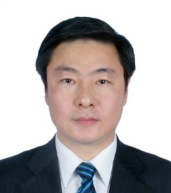

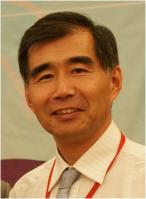

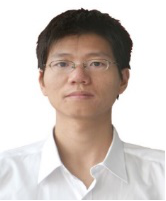

Xinping Mao Deputy Dean of Baosteel Central Research Institute; Member of Chinese Academy of Engineering
Yide Wang Professor at University of Science and Technology Beijing, China; Member of Chinese Academy of Engineering
Di Tang Professor at University of Science and Technology Beijing, China
Zhenli Mi Researcher at University of Science and Technology Beijing, China
Shuize Wang Top Scientist at Wuhan Branch of Baosteel Central Research Institute
Mingxin Huang Associate Professor at the University of Hong Kong
【Chief members】
Xinping Mao Deputy Dean of Baosteel Central Research Institute; Member of Chinese Academy of Engineering
Yide Wang Professor at University of Science and Technology Beijing, China;
Member of Chinese Academy of Engineering
Di Tang Professor at University of Science and Technology Beijing, China
Zhenli Mi Researcher at University of Science and Technology Beijing, China
Shuize Wang Top Scientist at Wuhan Branch of Baosteel Central Research Institute
Mingxin Huang Associate Professor at the University of Hong Kong
【Research Background】
In recent years, the automobile industry in China has developed rapidly. This has significantly increased public energy consumption, which in turn, has negatively affected the environment. Existing research has shown that for every 10% drop in the weight of passenger cars, fuel consumption and emissions are reduced by 6–8%. This suggests that lightweighting is the most effective means to saving energy and reducing automobile emissions.
Safety is of utmost importance when lightweighting an automobile. Advanced, high-strength steel provides a cost-effective and lightweight automobile material that does not compromise on safety. Environmental sustainability and high performance have become the most important trends in developing automotive steel materials. Subsequently, it is a hot research topic in the global automotive steel field to develop new, high-strength and tough, lightweight automotive steel materials and to evaluate their application performance.
【Research Objectives】
This study focuses on researching and developing lightweight, advanced automotive steel materials. The most advanced material design ideas and methods were used to combine material integration computing and digitization technology. This was done so that material development could be transformed from the traditional “experience and experiment” trial-and-error method to the “calculation and verification” prediction model. New manufacturing technology for advanced steel materials was explored, to break through the existing technological status quo, and to realize a green and intelligent manufacturing process. Based on the needs of the industry, automobile materials were applied and demonstrated to promote lightweighting and the use of advanced steel.
【Main Research Areas】
1. Development and application research on advanced, high-strength steel for advanced, short-process vehicles.
2. Integrated simulation for full digital processing of automotive, specialized steel based on material design.
3. Development of new, high-strength and tough, lightweight, automotive steel materials.
4. Technical research on the toughness and strengthening mechanisms, phase transformation mechanism, and delayed fracture mechanism of automotive steel.
【Significant Research Progress】
1. Development and application of advanced, high-strength steel for green and low-cost vehicles based on the advanced short process.
In view of the demand for lightweight, greener, and affordable automobiles, 1500 MPa hot-formed steel and 600 MPa duplex steel series products were developed using the thin slab continuous casting and direct rolling process. The products have a minimum thickness of 1.0 mm, to replace the existing, traditional cold rolled products of the same type. The manufacturing process reduced energy consumption by about 70%; the environmental impact index reduced by about 55% (LCA); and additionally, the manufacturing cost was greatly reduced. Related products have been certified by the automobile OEM.
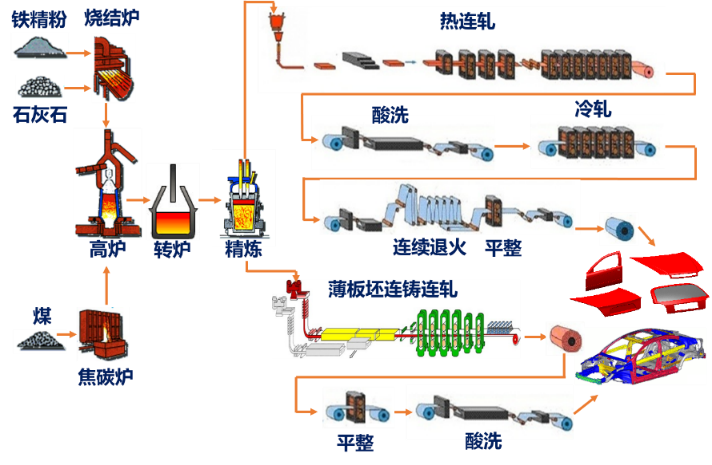
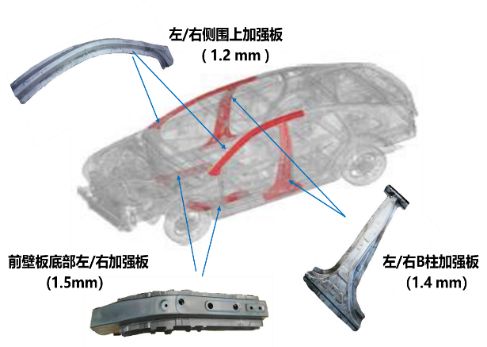
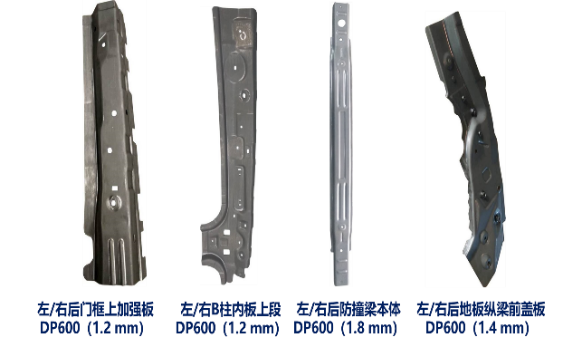
Comparison of manufacturing process of high-strength automotive steel
Automotive application of short-process hot formed steel
Automotive parts made of short-process duplex steel
2. Integrated simulation for full digital processing of automotive specialized steel based on material design.
An integrated simulation platform, for full digital processing, has been built for typical, specialized steel products for automobiles (such as cord steel, alloy spring steel, etc.). A user’s demand for material properties are met by exploring the correspondence between material composition, organization structure, processing parameters, and material properties. This allows for optimized solutions for components and processing to be proposed. The construction of the full digital processing simulation platform and the development of digital models were completed to realize the digitization of processes such as steelmaking, continuous casting, heating, rolling, cooling, etc. Through actual connection with production, the digital simulation of the whole chain, process parameters, and process quality from steelmaking to cooling could be realized. This has resulted in not only the beneficial linkage of digital models to a resulting physical object, but also a highly efficient material research database and development platform. The integrated simulation platform shortens the product development cycle, improves product quality and stability, and ultimately enhances product customizability.

Implementation process and framework of simulation platform for digital process integration
